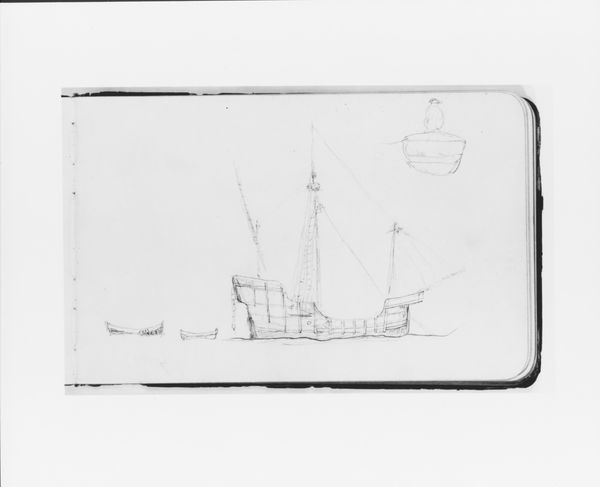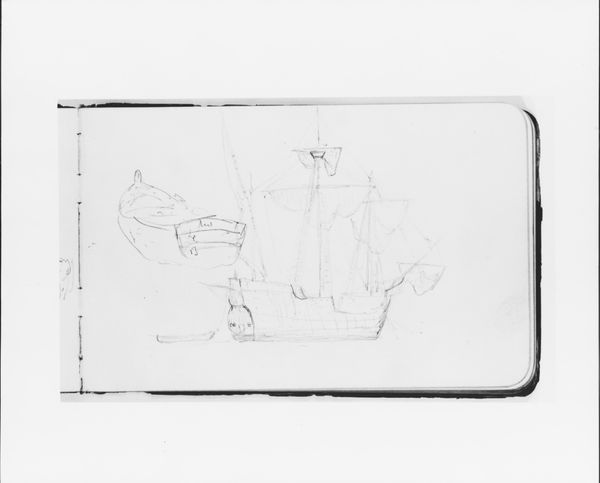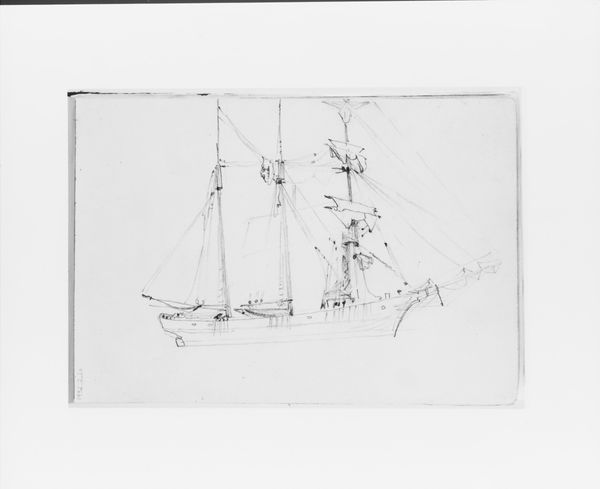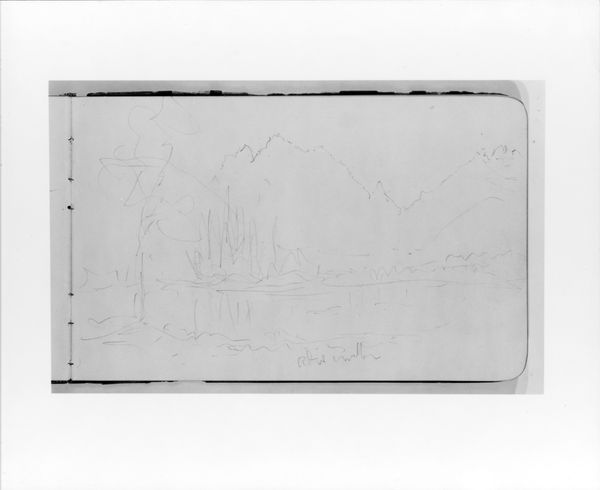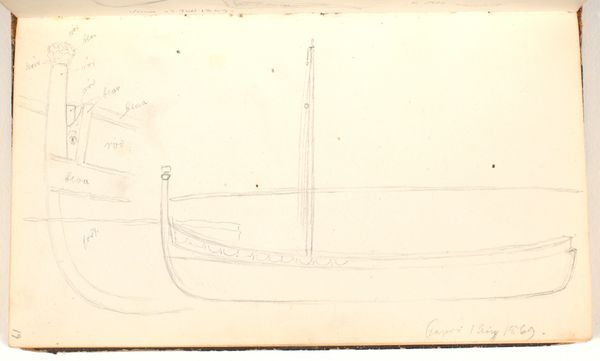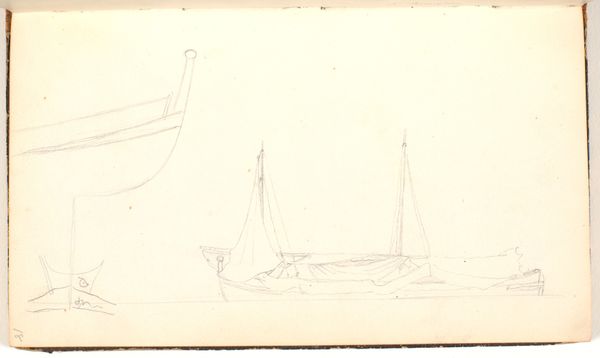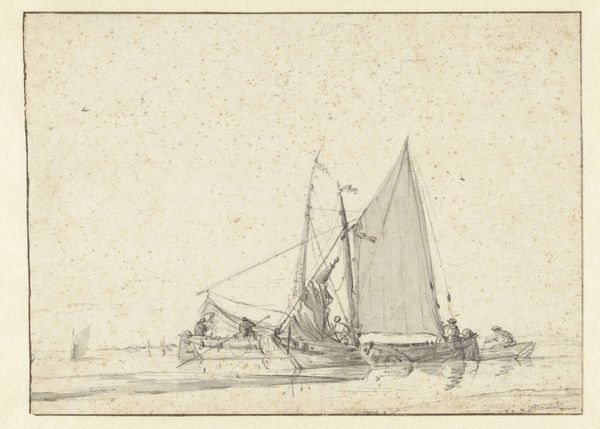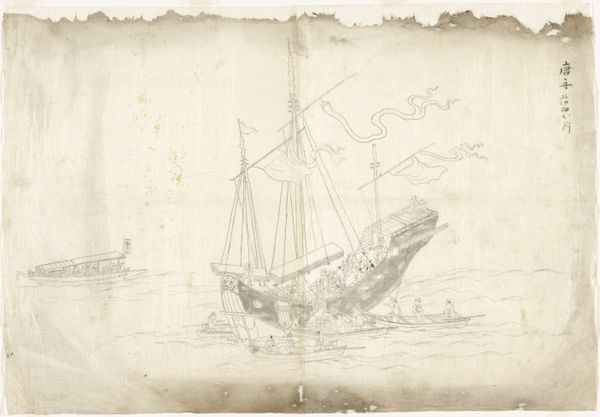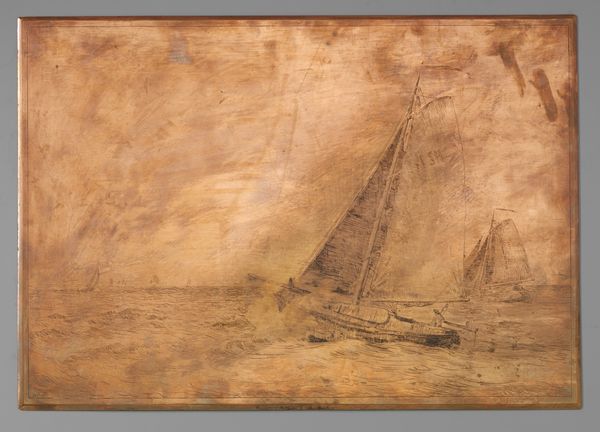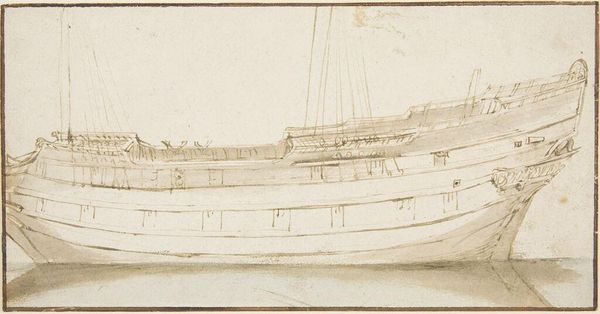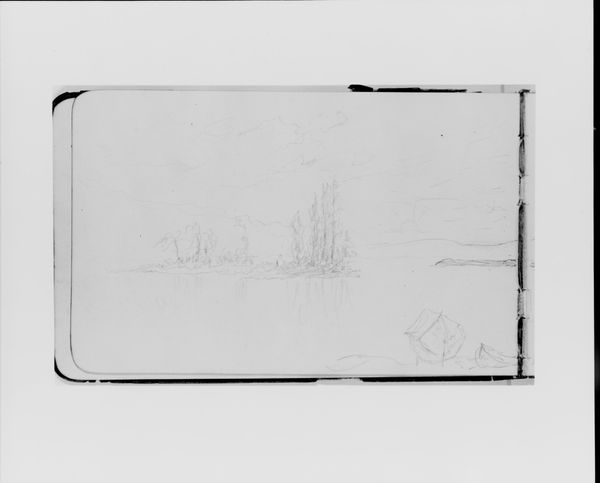
Ship Study for the Landing of Columbus (from Sketchbook) 1891
0:00
0:00
#
comic strip sketch
#
thin stroke sketch
#
ship
#
pen illustration
#
incomplete sketchy
#
ink line art
#
linework heavy
#
ink drawing experimentation
#
pen-ink sketch
#
thin linework
#
initial sketch
Dimensions: 4 3/4 x 7 3/4 x 7/16 in. (12.1 x 19.7 x 1.1 cm)
Copyright: Public Domain
Editor: Here we have Albert Bierstadt’s "Ship Study for the Landing of Columbus" from 1891, done in ink on paper. It’s a simple sketch, very linear and open. What do you see in this piece? Curator: This work, rendered primarily through line, is intriguing. Observe the density of lines around the hull of the ship, a clear indication of form and volume using only tonal variation achieved through hatching and cross-hatching. Note, too, how the masts, formed with single strokes, guide the eye upward, contrasting the ship’s solid base. Editor: So the variation in line weight and density is what creates the image, instead of just being a technical drawing. Curator: Precisely. The artist’s choice of line serves not merely a descriptive function, but an aesthetic one. Consider also the perspective—slightly elevated—lending the ship a certain grandeur, further enhanced by the emptiness surrounding it. How does that void function here, would you say? Editor: It isolates the ship. It's about the ship as form, rather than a narrative of exploration. I hadn't really considered how significant the negative space could be. Curator: Indeed. Bierstadt manipulates these elements, line and space, to focus attention solely on the ship's architecture and design. One might suggest he is less interested in the ship's symbolic weight than in its intrinsic visual properties. Editor: I’m now appreciating the level of detail communicated through very economical means. This close examination really pulls forward the basics of art making: form, line and composition. Thanks! Curator: My pleasure. These fundamentals are, after all, where profound observations often reside.
Comments
No comments
Be the first to comment and join the conversation on the ultimate creative platform.
